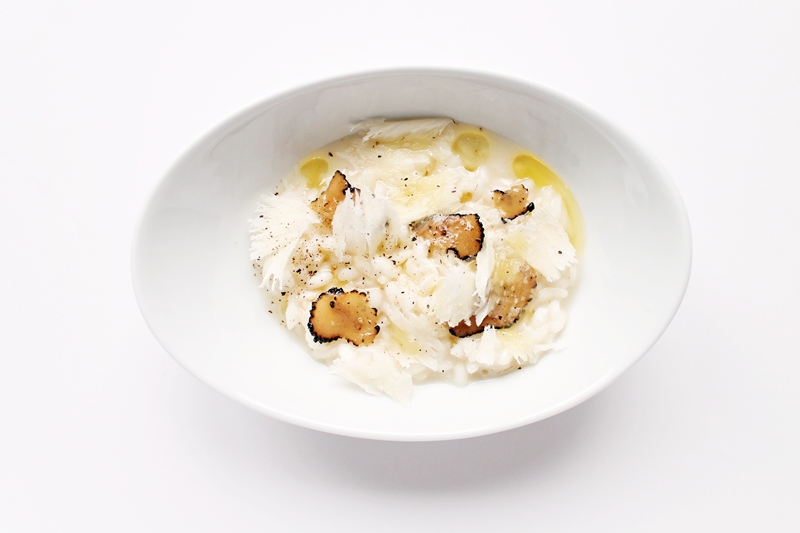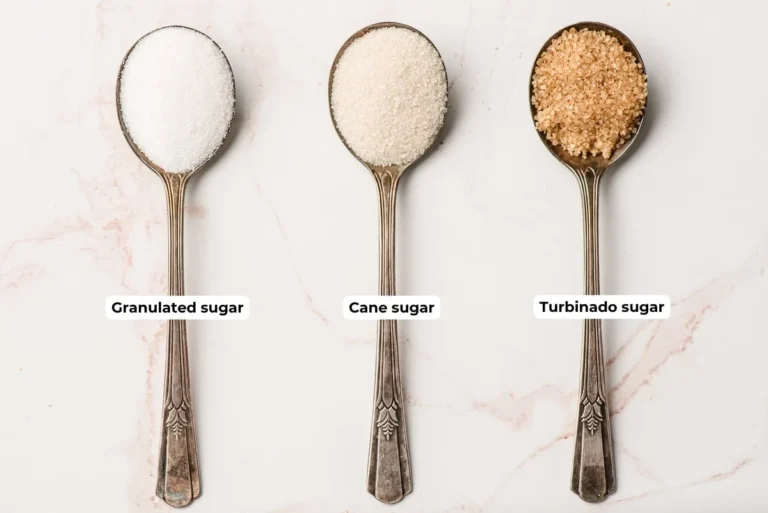TheChampagneSommelier plays around in the kitchen with crispy chicken and risotto. [ read the full champagne story ]
Estimated reading time: 6 minutes

A Culinary Mandate from TheChampagneSommelier
There is a charming, almost endearing simplicity to Italian cooking. It takes the familiar—rice, poultry, butter—and elevates it through technique and a stubborn refusal to rush. Today, we are taking this rustic, soulful discipline and giving it a necessary bath in French sophistication. We are not merely eating; we are constructing a gastronomic thesis on the interplay of texture, fat, and glorious, cleansing acidity.
The dish is the utterly classic, yet deceptively complex, triumvirate of Crispy Sage Chicken, Parmesan Risotto, and a Zesty Green Salad. It is a masterful study in contrasts: crispy against creamy, rich against tart, and the warm earthiness of sage against the inevitable brilliance of Champagne.
You will need discipline, quality ingredients, and the correct bottle selection. Do not, under any circumstances, allow this simple masterpiece to be undermined by a flabby, pedestrian wine. That would be criminal negligence.
The Recipe: A Study in Texture and Terroir
This is not a suggestion; it is a prescription. Follow it precisely.
Ingredienser (The Components of Genius)
| Component | Quantity | Notes |
| Chicken | 4 | Skin-on chicken breasts (Poulet de Bresse, Bjärefågel, if you must, or any poultry with proper pedigree). |
| Fresh Sage Leaves | 8–12 | The aromatic currency of the dish. |
| Salt and Black Pepper | To taste | Do not be timid. |
| Neutral Oil | For searing | For the necessary crisp. |
| Butter | 1 tbsp | To finish and baste. |
| Risotto (The Creamy Soul) | 3 dl | Arborio rice (for the proper starch release). |
| Shallot | 1 small | Finely minced. |
| Garlic | 1 clove | Finely minced. |
| White Wine | 1 dl | Dry, crisp—or simply omit if your palate is already too complex. |
| Hot Stock | Approx. 8 dl | Chicken or vegetable, kept meticulously warm. |
| Parmesan | 1 dl | Finely grated (use the real thing, please). |
| Butter | 1 tbsp | For the final, crucial mantecatura. |
| Olive Oil | For sautéing | The Italian lubricant. |
| Green lettuce (The Acidic Rebuke) | 2 handfuls | Crisp green leaves (Romaine, Little Gem). |
| Rosé Lettuce | A few leaves | Coarsely chopped (for colour and subtle bitterness). |
| Lemon Juice | 1 tsp | The essential, sharp counterpoint. |
| Olive Oil | 1 tbsp | High quality, naturally. |
| Flaky Sea Salt | A pinch | The final flourish. |
How to do it (The Execution)
1. The Chicken (The Crispy Crux)
- Pat the chicken breasts until they are aggressively dry. Moisture is the enemy of crispiness.
- Gently, surgically, lift the skin on each breast without detaching it fully. Tuck 2–3 sage leaves beneath the skin. This infuses the fat and protects the herb from burning. Season the skin aggressively with salt and pepper.
- Heat the oil in a heavy-bottomed pan over medium-high heat. Place the chicken skin-side down. Press gently with a spatula—this is crucial—to ensure maximum, uniform contact and render the fat. Sear for 6–8 minutes until the skin is a magnificent, deep golden-brown shield.
- Flip, lower the heat slightly, add the butter, and baste furiously. Cook for another 4–6 minutes until the internal temperature is approximately $70^{\circ}\text{C}$ (a perfect, judicious hint of pink remaining).
- Remove and rest for five minutes. Slice into confident, centimetre-thick segments.
2. The Risotto (The Creamy Foundation)
- Sauté the shallots and garlic in olive oil until they soften into quiet submission, but without taking on any vulgar colour.
- Add the Arborio rice. Toast it for one minute until the edges of the grains become translucent—the tostatura.
- Pour in the wine (if you must). Allow it to be completely absorbed.
- Begin the ritual: add the hot stock, one ladleful at a time. Stir constantly, patiently, like a devotee in a meditative trance. Do not add the next ladle until the previous one is fully absorbed.
- After 18–20 minutes, when the rice is creamy but still retains a definitive, toothsome al dente core, remove it from the heat. This is the mantecatura moment: beat in the final tablespoon of cold butter and the Parmesan until the risotto flows like a rich, velvety lava. Taste, adjust salt. Perfection achieved.
3. The Salad (The Necessary Tartness)
- Toss the lettuces. Dress them at the last possible moment with the olive oil and the precise measure of lemon juice. A pinch of flaky salt is mandatory. This salad is not a side dish; it is a palate-whetter, an acidic counterpoint to the richness that is about to ensue.
4. Serving (The Final Presentation)
- Present the risotto in the centre of a warmed plate. Place the fanned chicken slices confidently atop the rice. Crown the whole affair with the tart, vibrant salad. A dish of profound simplicity, begging for an equally profound wine.
III. The Sommelier’s Dictate: Champagnes Worthy of the Plate
This dish presents a formidable challenge. We have richness (butter, Parmesan), aromatic herbs (sage), and the need for a cleansing, structural foil. We need a Champagne that is robust enough to cut through the mantecatura of the risotto yet fine enough not to overwhelm the delicate poultry. The correct choice is, as always, not the most expensive, but the most fitting.
Here are three prescriptions—from the conventional to the utterly necessary.
1. The Classic Counterpoint: A Mature, Low-Dosage Blanc de Blancs
The core of the challenge is the fat. We need the cleanest, most cutting acidity available, framed by the subtle, toasty complexity of age.
- The Wine: Selosse Initial (Extra Brut/Brut) or a mature Pierre Péters Cuvée Spéciale Les Chétillons (Extra Brut).
- Why: Chardonnay from the Côte des Blancs, especially when slightly mature, offers razor-sharp acidity and a chalk-driven salinity that will slice through the Parmesan and butter like a perfect surgical instrument. The autolytic notes of brioche and almond from the age will seamlessly echo the nutty brown butter used for the chicken. The low dosage ensures purity. This is a pairing of structure and finesse.
2. The Aromatic Amplifier: A Pinot Meunier-Dominant Grower
This is a bolder, more intriguing choice. We are looking to match the aromatic intensity of the sage and the earthiness of the chicken. The often-underestimated Meunier, with its generous fruit and unique spice notes, is the unexpected star.
- The Wine: A Benoît Tarlant ‘La Vigne d’Or’ (Blanc de Meuniers) or a Nicolas Maillart – Monmartin (Extra Brut).
- Why: Meunier brings a slightly more savoury, earthy, and often spicy character than Chardonnay. This aromatic resonance is the perfect partner for the warm, herbal notes of the sage. Its inherent roundness provides a lovely textural bridge to the creamy risotto, while still possessing enough inherent acidity to perform the necessary cleansing ritual. This is a pairing of sympathy and spice.
3. The High-Definition Powerhouse: A Rich, Oxidative, Low-Dosage Brut
For the hedonist who demands complexity at every turn, we move to a Pinot Noir-heavy blend, embracing a touch of oxidative richness to match the depth of flavour achieved in the pan.
- The Wine: Bollinger Special Cuvée (or better yet, La Grande Année Extra Brut).
- Why: Bollinger’s signature style—high proportion of Pinot Noir, barrel fermentation, and a significant reserve wine component—provides a weight and depth that can handle the richness of the whole dish. The slight, oxidative maturity adds notes of baked apple and walnuts, which align perfectly with the beurre noisette and the Parmesan. The structure is powerful, the flavour immense, yet it remains resolutely dry. This is a pairing of strength and authority.
Choose wisely. The chicken is resting, the risotto is weeping with creaminess, and the moment demands excellence.






